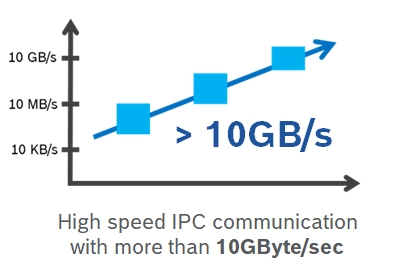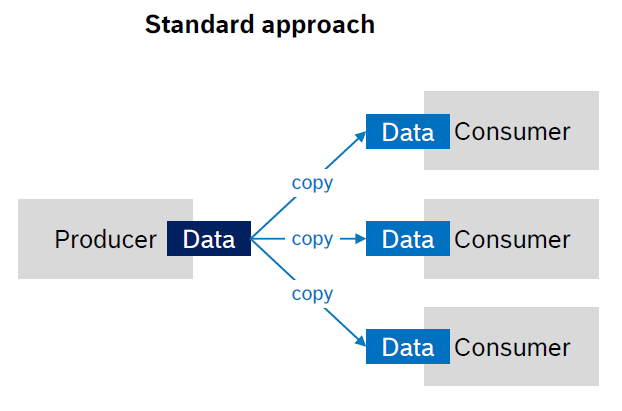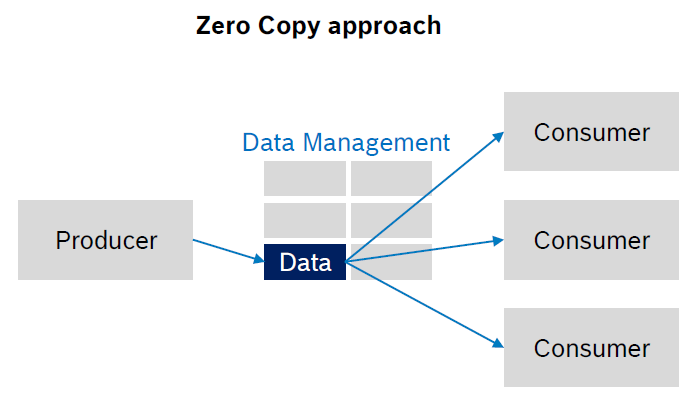High-speed communication
Communication demands
Traditional automotive software, for example engine control software, has modest communication demands that typically consumes much less than 1MB/s.
In AD/ADAS such as Drive Assistance or Automated Driving software, efficient communication is essential and typically requires high bandwidths in the range from 100MB/s-10GB/s or more.

Standard communication approach
The standard communication approach, for example found in the AUTOSAR Classic Runtime Environment (RTE), involves the creation of multiple copies of data for communication purposes.
While functional, this methodology exhibits a fundamental limitation in scalability. As data communication requirements increase, so too does the need for additional data copies, resulting in significant communication overhead. This inherent overhead hinders the efficiency and performance of the system, making it less suitable for applications demanding high bandwidths and real-time responsiveness.

The standard communication approach's reliance on data duplication can lead to reduced performance and increased resource consumption as data volumes grow.
Zero-copy communication approach
ETAS DMS communication a true zero-copy, shared memory approach that allows to transfer data from publishers to subscribers without any copies in the middleware. This ensures data transmissions with constant latency, regardless of the size of the payload.
The use of true zero-copy communication with constant overheads in ETAS DMS has a number of interesting and important properties. In particular, communication scales very well and as the message size increases the bandwidth increases as well - this is because the only cost is the fixed overhead and therefore the same whatever the message size!
The ETAS DMS middleware includes a communication management server. This handles two critical tasks for the middleware: firstly as a broker connecting publishers/subscribers, and, secondly, as a shared memory manager controller segment allocation for zero-copy support.
